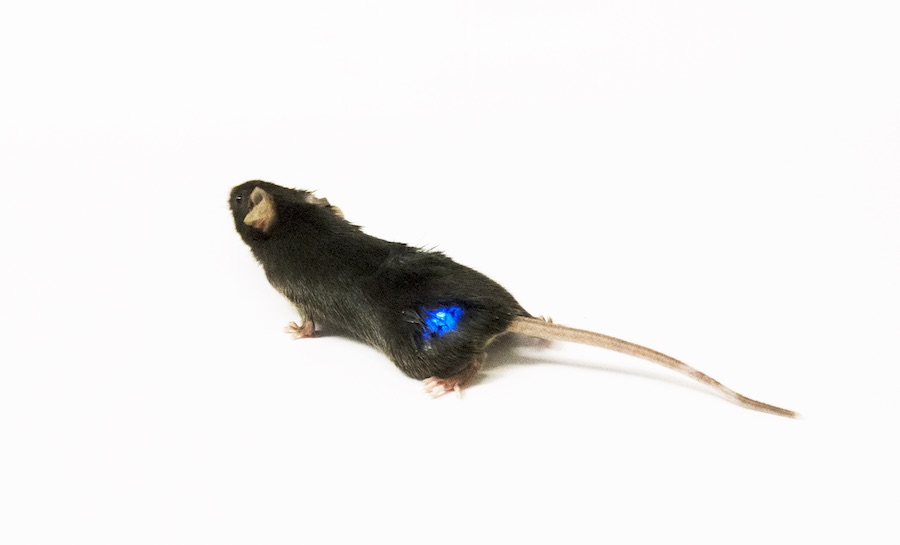Treatment of chronic pain, diabetes, nerve damage and many other debilitating diseases that affect millions globally would benefit from medicine and pain management methods targeting the source of the pain. And an interdisciplinary team, including Mizzou Engineering’s Yi Zhang, is one step closer to making such a breakthrough a reality.
Zhang, an assistant professor of Biomedical, Biological and Chemical Engineering at MU; John A. Rogers at Northwestern University; Lisa A. McIlvried and Robert W. Gereau IV at Washington University in St. Louis; Aaron D. Mickle at the University of Florida and Philipp Gutruf at the University of Arizona recently published “Battery-free, fully implantable optofluidic cuff system for wireless optogenetic and pharmacological neuromodulation of peripheral nerves,” in the high-impact journal Science Advances.
Zhang and his colleagues focused on the peripheral nervous system and how to utilize localized, wireless drug delivery and optogenetic devices to manipulate neuronal function. Such devices are currently being studied in mice, with the goal of eventually translating to humans to address issues of nerve damage and chronic pain, among others.
“The fundamental concepts of optogenetic and pharmacological neuromodulation approaches have existed for decades. Nevertheless, the lack of miniaturized, wireless, battery-free systems for use in rodent animal models has limited the advances in pre-clinical studies required to further expand the therapeutic potential of these techniques,” Zhang explained.
Zhang and his colleagues’ device mounts to the sciatic nerve and can serve a dual function. It is a soft, fully implantable platform that can be interfaced around peripheral nerves for local, programmed delivery of therapeutic light and/or pharmaceuticals.
“The major advantage of this wireless platform over previous devices is the ability to deliver light and/or drugs with temporal and spatial precision to a specific nerve bundle, without the need to handle or manipulate the animal. This can eliminate a number of behavioral artifacts associated with different methods of drug injection and permits pairing of drug and/or light stimuli to specific cues or behaviors,” Mickle explained.
Its smaller size and lower weight make it easier for animals to wear and move around comfortably, enabling full implantation on even small animals such as mice. Further, the electrochemical pumping scheme — the method used to get the drugs to the nerve — does not generate significant heat in the pumping chamber, which improves drug stability — a critical new development in the field.
The device also uses a comfortable cuff that supports interfacing with peripheral nerves. The research team analyzed the gait and movement of the mice used in the study, and mice with the implant did not exhibit any behavioral indications of nerve damage compared to the control group.
The goal is to continue to study the device’s performance in other, larger animals in the hope of eventually making it available and practical for human use. Additionally, the team wants to develop an easy way of refilling the drugs without removal of the device or need for a replacement. The future applications have the potential to shape the way we relieve pain and provide light therapy to help humans with chronic pain and nerve damage alongside promising neuroscientific applications.
“The ability to target specific peripheral neuron populations with temporal and spatial precision in awake-behaving animals over extended periods of time is of broad potential interest to the neuroscience community,” Rogers said.
